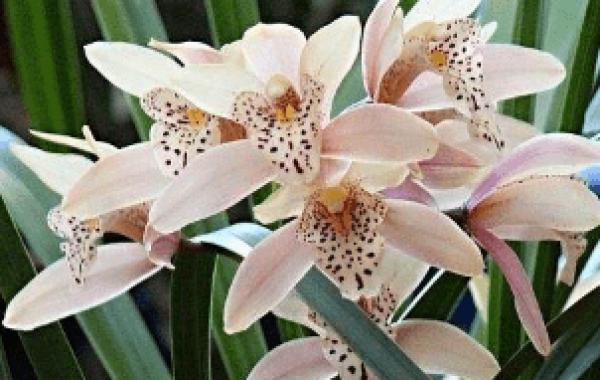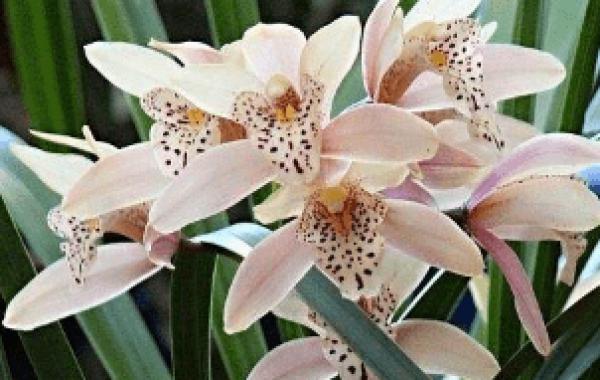Phalaenopsis, a precious orchid, how to grow it?
1. Temperature
The first thing to keep Phalaenopsis at home is to keep the temperature. Phalaenopsis likes the environment of high temperature and humidity, the lowest temperature during the growth period should be above 15 ℃, and the suitable temperature for Phalaenopsis growth is 16-30 ℃. Attention should be paid to warming at the turn of autumn, winter and spring, as well as when the winter temperature is low. In general, rooms with heating equipment in winter are not difficult to reach, but be careful not to put flowers directly on the radiator or too close to them.
When the summer temperature is too high, it is necessary to cool down and pay attention to ventilation. If the temperature is higher than 32 ℃, Phalaenopsis will usually enter a semi-dormant state to avoid continuous high temperature. The flowering period is around the Spring Festival, and proper cooling can prolong the viewing time. The night temperature during flowering should be controlled between 13 and 16 ℃, but not less than 13 ℃.
2. Humidity
Phalaenopsis is native to the primeval forest with more fog and higher temperature. Phalaenopsis does not have thick pseudobulbs to store nutrients, and if there is not enough humidity in the air, the leaves are wrinkled and weak. Therefore, Phalaenopsis should be cultivated and maintained in an environment with high ventilation and humidity.
The suitable air humidity for Phalaenopsis growth is 60%-80%. The new root of Phalaenopsis should be watered more in the prosperous period and less in the dormant period after anthesis. The plants grow vigorously in spring and autumn around 05:00 in the afternoon, and the plants are watered at 09:00 and 05:00 every day. The light is weak and the temperature is low in winter. Watering every other week is enough and should be carried out before 10:00 in the morning. In the event of a cold wave, it is not suitable to water, keep dry, wait until after the cold wave to resume watering.
The principle of watering is to see dry and wet, and when the surface of the cultivation substrate becomes dry, water should be watered again, and the water temperature should be close to room temperature. When the indoor air is dry, sprayers can be used to spray directly to the leaves, and you can see that the leaves are wet, but be careful not to spray water spray on the flowers during flowering. Tap water should be stored for more than 72 hours before watering.
3. Lighting
Although Phalaenopsis prefers shade, it is still necessary to make the orchid plant accept some light, especially before and after flowering, the appropriate light can promote Phalaenopsis to blossom and make the flowers gorgeous and long-lasting, generally should be placed indoors where there is scattered light, do not let direct sunlight.
4. Ventilation
The normal growth of Phalaenopsis needs flowing fresh air, so domestic Phalaenopsis must be well ventilated, especially in the high humidity period in summer, it must be well ventilated to prevent heat, and at the same time avoid the infection of diseases and insect pests.
5. Fertilization
Phalaenopsis should be fertilized all year round and should not be stopped unless the low temperature lasts for a long time. Winter is the flower bud differentiation period of Phalaenopsis, and the cessation of fertilizer can easily lead to no flowers or few flowers. Spring and summer is the growing period, thin liquid fertilizer can be applied every 7 to 10 days, organic fertilizer should be used, Phalaenopsis special nutrient solution can also be used, but do not apply when there are buds, otherwise it is easy to drop buds early. Long leaves in summer (that is, after flowering), nitrogen and potash fertilizer can be applied. Phosphate fertilizer can be used in autumn and winter flower stem growth period, but it should be thin, about every 2-3 weeks.
The time of fertilization is after watering in the afternoon, and after several times of fertilization, orchid pots and orchid plants should be washed with a lot of water to avoid residual inorganic salts harming the roots.
6. Management
The flowering period of butterfly orchids is usually around the Spring Festival, and the viewing period can be as long as 2-3 months. When the flowers wither, the withered flowers should be cut off as soon as possible, which can reduce the consumption of nutrients. If the flower stem is cut off from the base of 4-5 nodes, it can blossom again after 2-3 months. However, the nutrient consumption of the plant is too high, which is not conducive to the growth of the coming year.
If you want to blossom again in the coming year, it is best to cut the flower stem from the base, and when the matrix ages, it should be replaced in time, otherwise the air permeability becomes worse, which will cause root rot, weaken plant growth and even die. Generally speaking, it is appropriate to change the basin in May when the new leaves grow.
Related
- Is the orchid suitable for indoor use? Is it good for the body?
- How to prevent the empty root of orchids?
- What to do after the crab claw orchid is withered?
- Why are the leaves of orchids always yellow? Fertilizing and watering.
- Can the root of the gentleman orchid be saved if it is rotten?
- Diagnosis and treatment of cotton-blowing beetle insects in Cymbidium
- There is a way for a gentleman's orchid to rot.
- What is the most suitable temperature and humidity for the orchid?
- How to raise a gentleman's orchid? Cultivation techniques of Cymbidium
- How to prepare the nutritive soil for the cultivation of Cymbidium



